New perk! Get after it with local recommendations just for you. Discover nearby events, routes out your door, and hidden gems when you sign up for the Local Running Drop.
It’s been a while since Trek released their last version of the well-loved Speed Concept tri/TT bike. By my count, something like eight years since a serious revision—but maybe even more depending on your definition of “serious revision.” We’ve seen hints and glimpses and weird theories about the third generation Speed Concept (based on spy photos, we dubbed it the Speed Cncpt at one point). Visually, the new Speed Concept isn’t jarringly different than the last model, but there’s a lot more to this version than meets the eye.
Section dividerTrek Speed Concept Gen 3: The Basics
Though we tested the SLR 7 Ultegra 12-speed build of this new Gen 3 Speed Concept, the features on each of the four flavors (SLR 9, 9 eTap, 7eTap, and 7) are similar—save for wheels, drivetrain, and a few other bits like saddles. The frames/forks/bars are the same. According to Trek, the big news about this redesign is the fact that the new version is six minutes or 16 watts at 26mph (roughly Kona-winning pace) faster than the previous version. But there’s way more to it than that.
First, this is Trek’s first Speed Concept with disc brakes—a trend that is unavoidable in today’s high-end road bike market. For years Trek fans were left behind when it came to a tri bike that would take advantage of the super wide rims, greater selection, and the even lower prices that disc-brake wheels brought. Finally, you don’t have to choose Trek or disc.
Next, we’re seeing a big redesign on the Trek’s front end. Notably Trek has ditched the monopost riser that ironically a few competing brands have recently adopted (Orbea, for instance) and swapped it out for a dual-riser system with a very clean-looking—but also more flexible—fork/stem interface. No more cone/bayonet/brake cowl situation.
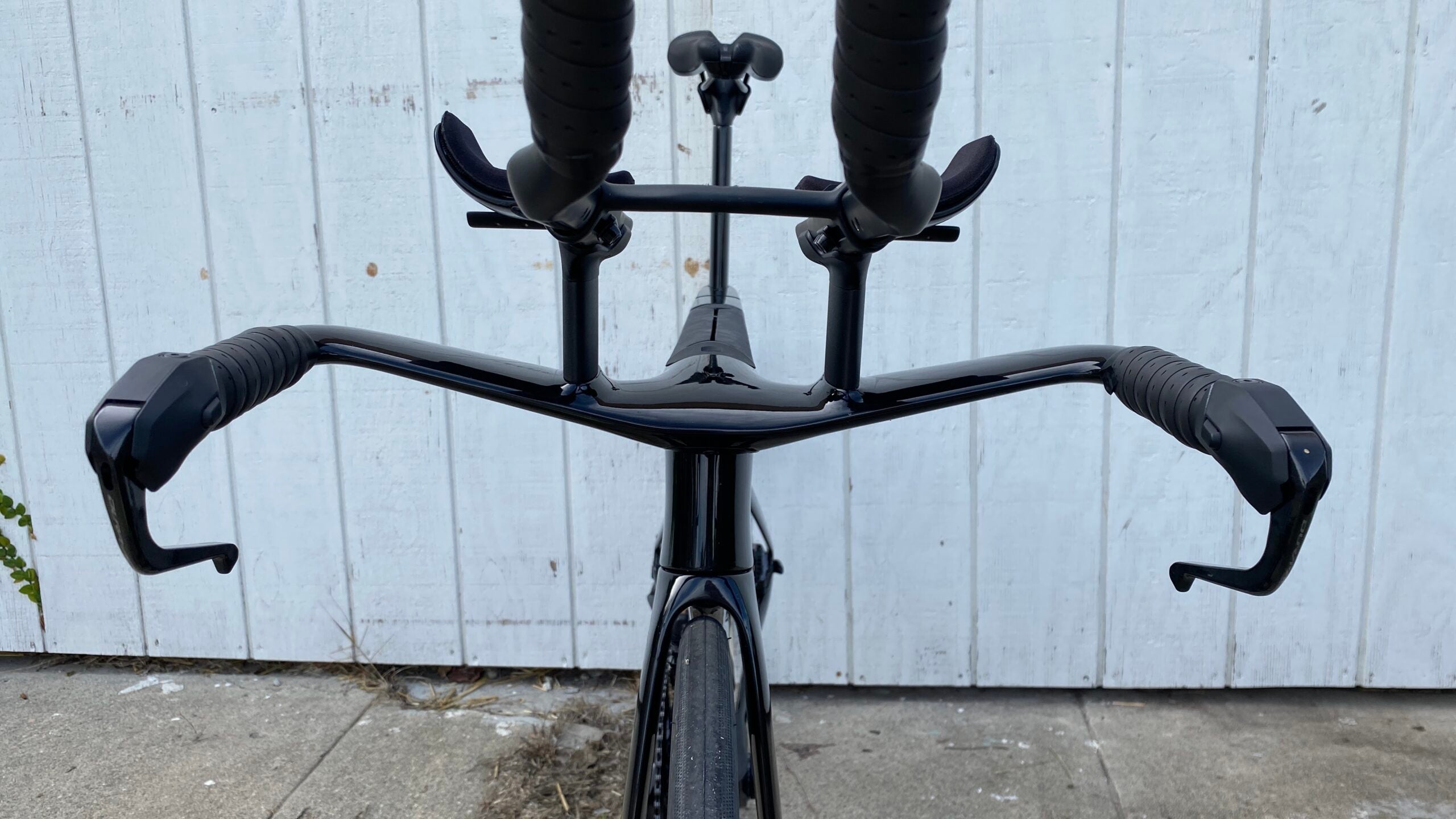
And while we’ll dig into the features in more detail just below, it’s worth noting that while Trek is playing catch-up with some of their features, they’re forging a new path with their IsoSpeed suspension system. While beam bikes can rightfully claim a level of suspension in their designs, IsoSpeed—which Trek has offered for years on other lines—is the first built-in suspension in a traditional double-diamond frame. The idea being that the suspension will lessen vibration from the road into the rider without sacrificing handling or stand-up response. Less vibration means less fatigue, which not only helps on the bike, but sometimes even more so on the run.
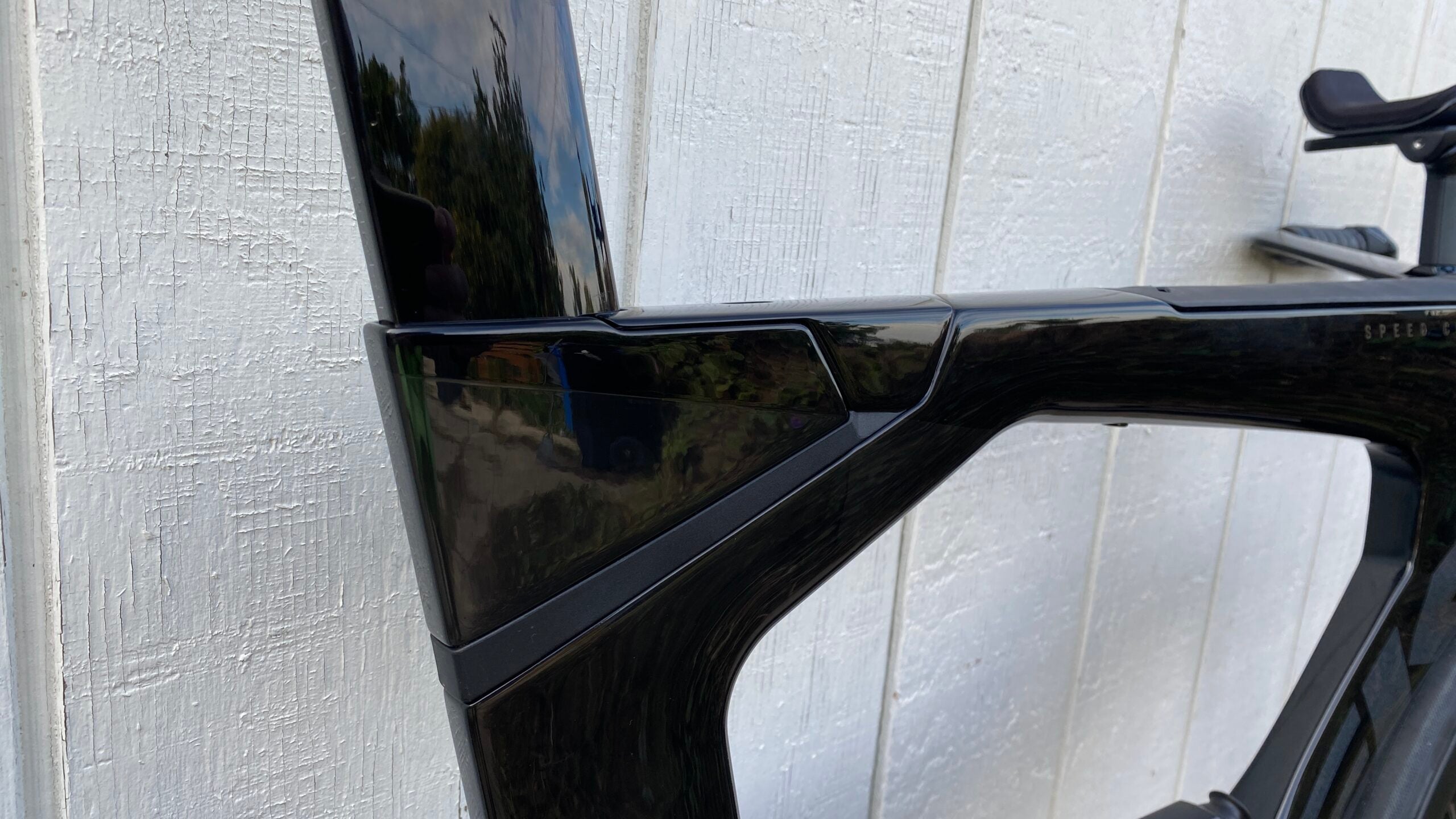
Trek Speed Concept Gen 3: The Features
There’s a lot going on with the new generation of Speed Concepts, so we’re going to break down the features on this bike below—in order from most effective to least—but leave our impressions until the following section.
Weight
Our size medium SLR 7 with Ultegra and midrange Bontrager carbon wheels weighed in just under the all-important 20-pound mark. While many triathletes might rightfully say that weight doesn’t matter much on a tri bike, there’s something to be said for how efficient this design is, and if the wind tunnel numbers are right, Trek did a great job of playing by the UCI rules, making things increasingly more aero, making a shockingly responsive ride, and doing it all without excess materials (Scott Plasma 6, I’m looking at you…). This is a tight bike with a low weight that comes as a result.
Aerodynamics
Trek claims this cuts 16 minutes off an Ironman time or saves 16 watts at 26mph. While most triathletes aren’t averaging 26mph for 112 miles (in fact, almost none are…), improvements are improvements. I’d love to see this setup against other bikes in this weight class like the new Quintana Roo V-PR, Scott Plasma 6, Orbea Ordu, or everyone’s favorite double-diamond benchmark, the Cervelo P5.
Disc Brakes
While it’s hard to argue that increased stopping power isn’t a good thing, there’s a lot more to the addition of disc brakes than that. Finally Speed Concept owners can use a greater selection of wider, faster, and oftentimes cheaper disc wheels. They also don’t have to deal with insane brake calipers and aero cowlings. In the latest Speed Concept, Trek also said it’s added discs without adding weight (a tough thing to do).
Hydration, Storage
Though Trek still hasn’t cracked the code on fully frame-integrated hydration like Scott or Canyon, their downtube hydration system is sleek and basically useful.
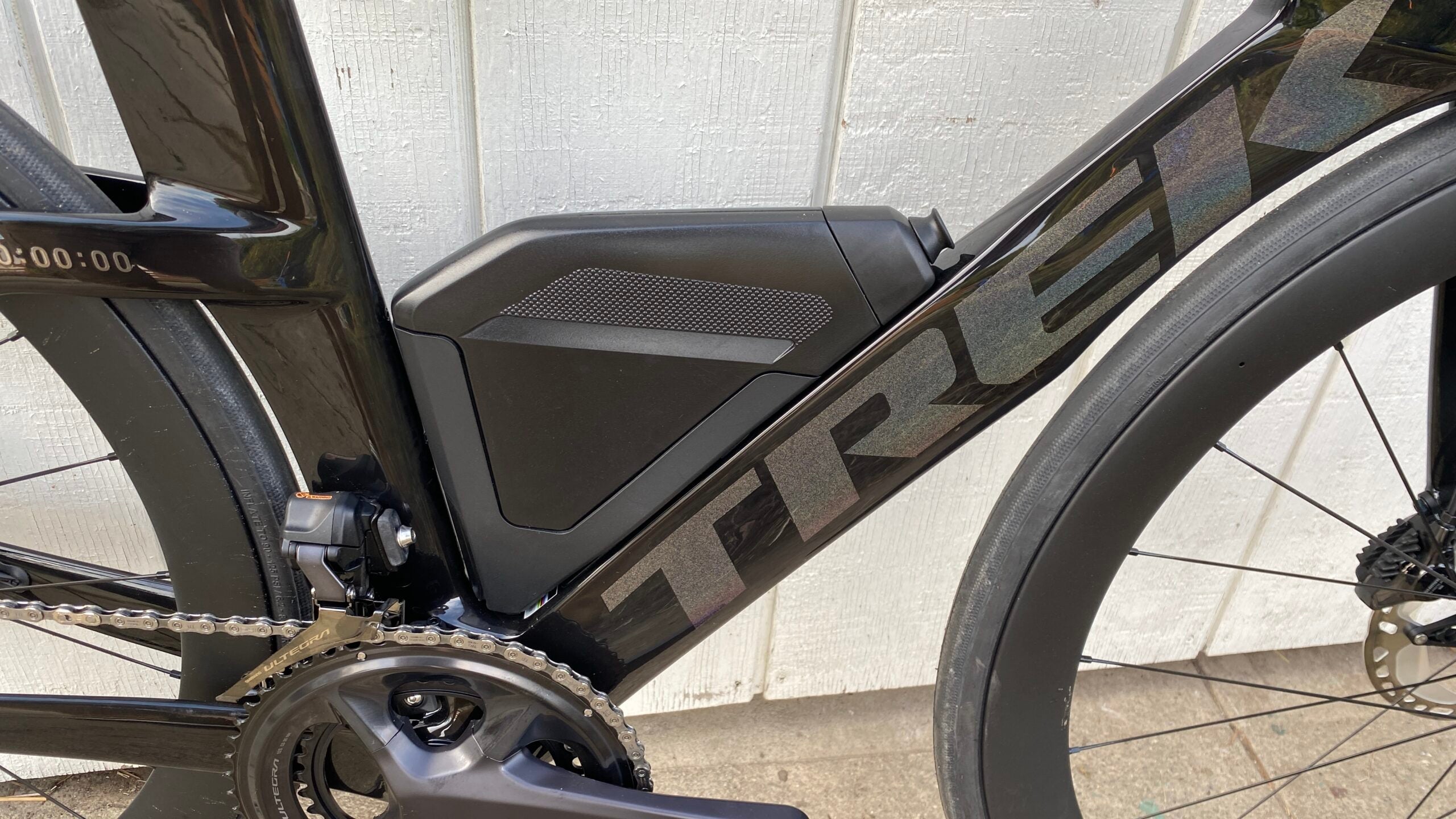
Their attachable between-the-bars system also looks about par for the course (we weren’t able to try it, however), and the integrated top tube storage actually went above and beyond what you normally see from a built-in bento box. (Removable dividers for organization helped manage the spacious cavity.)
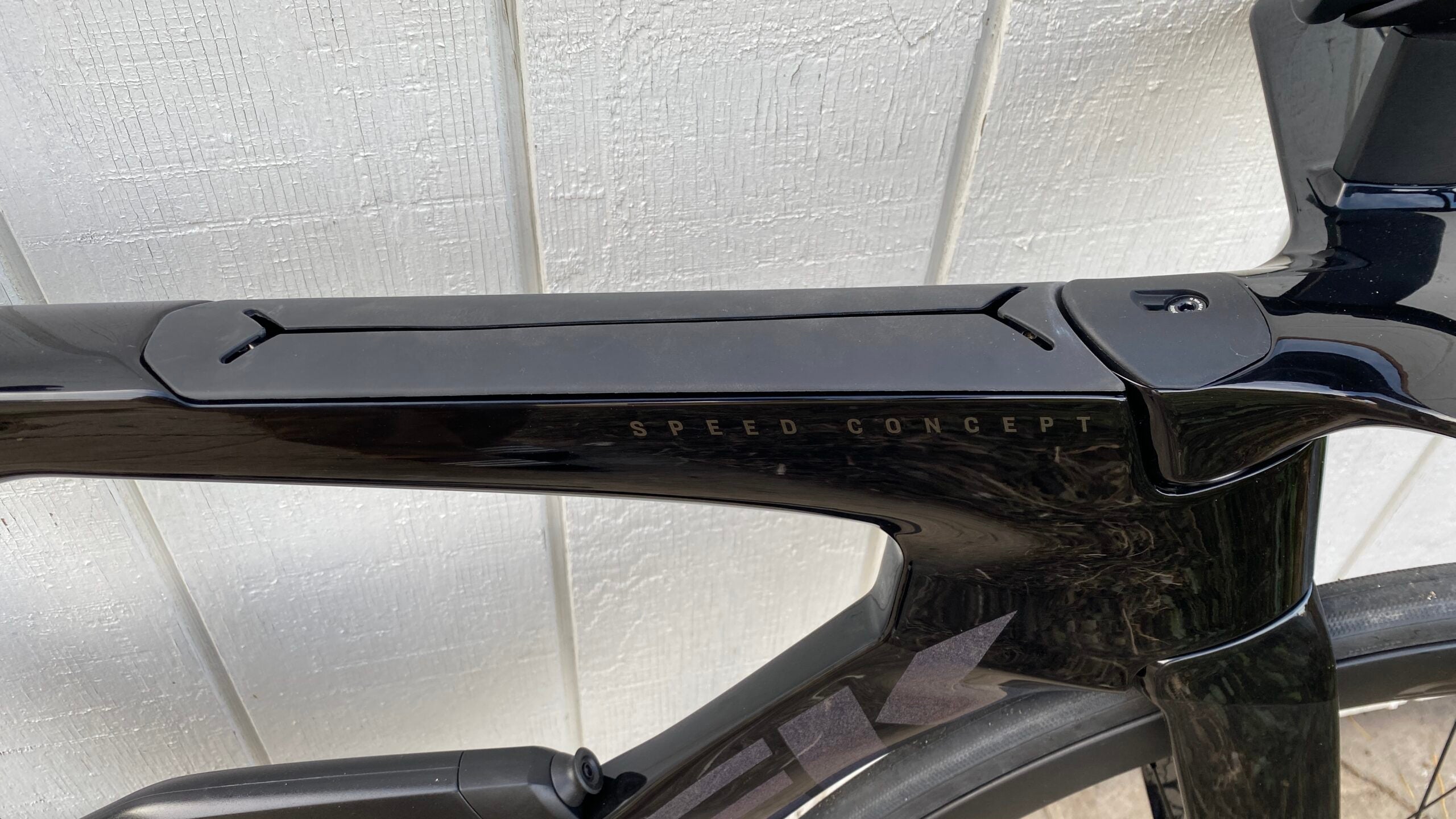
Finally, we really really liked the built-in tool/flat storage that was tucked neatly beneath the downtube water bottle—in many ways it kind of looked like something Canyon would do.
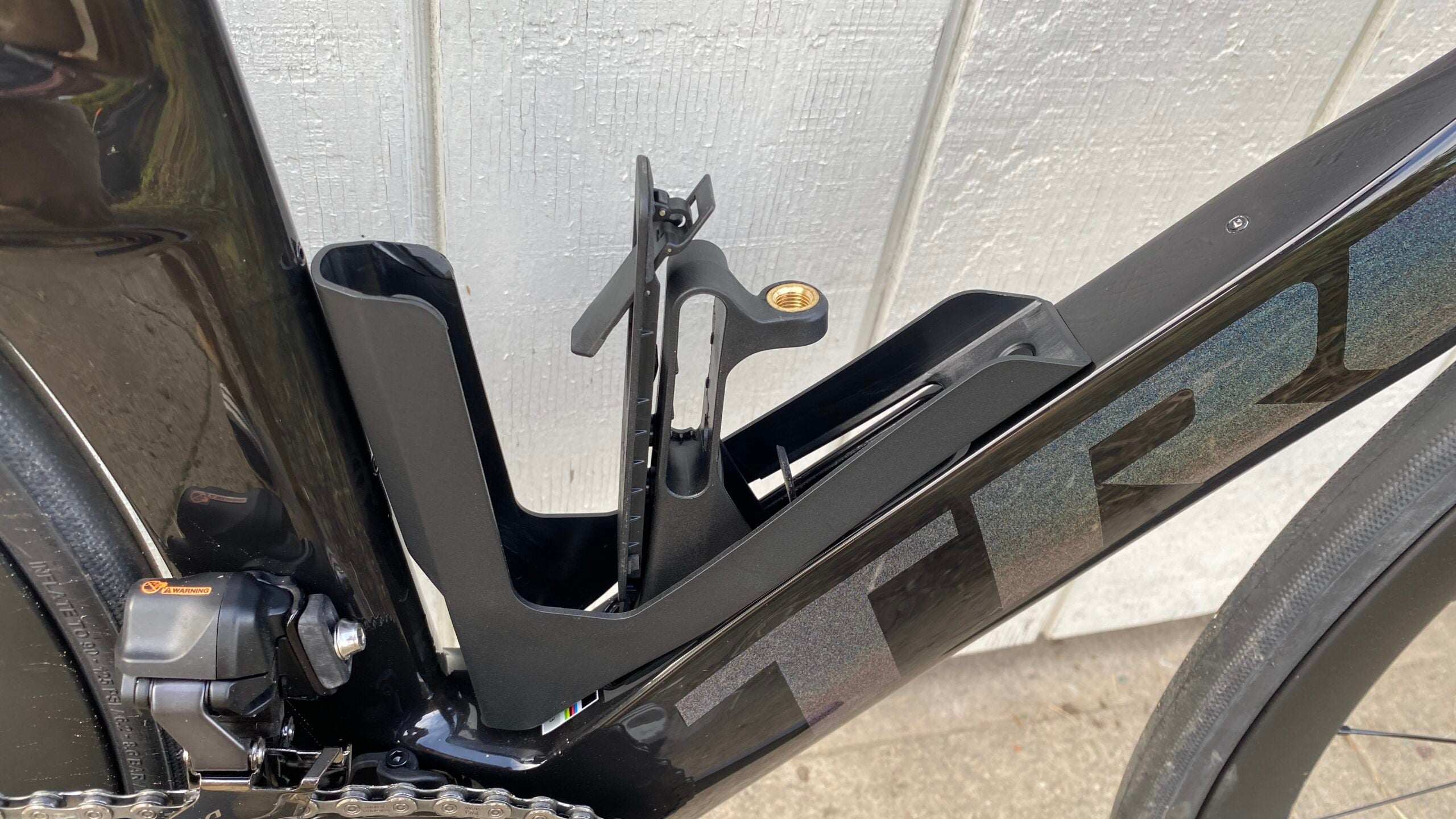
Suspension System
Trek’s IsoSpeed suspension system helps reduce vibration heading up from the road into the rider. Trek claims it increases compliance by 30%—which seems like a lot—by using an internal pivot system specifically placed to help with nose-riding triathletes. With reduced vibration, triathletes will have more energy to ride and run (especially if using a disc or deep-dish set of wheels). In practice, results were a bit of a mixed bag—hence this feature’s ranking on the list of features. Read on for our impressions.
Section dividerTrek Speed Concept Gen 3: The Good
Oddly enough, there’s a lot that’s really exciting on this bike that Trek chose not to highlight for some reason. There’s a lot of talk about the increased aerodynamics (which are great, but hardly perceptible when riding under 26mph not in a wind tunnel) and the suspension system, but not a lot of mention about the way the bike handles, its road feel, its handling, or its weight (which is quite low for tri standards). Trek does highlight excellent storage—which the Speed Concept does very elegantly—and their wide range of easily adjustable fit options across four sizes. Those are highlights worth noting because the new Speed Concept is worthy of praise in those arenas for sure.
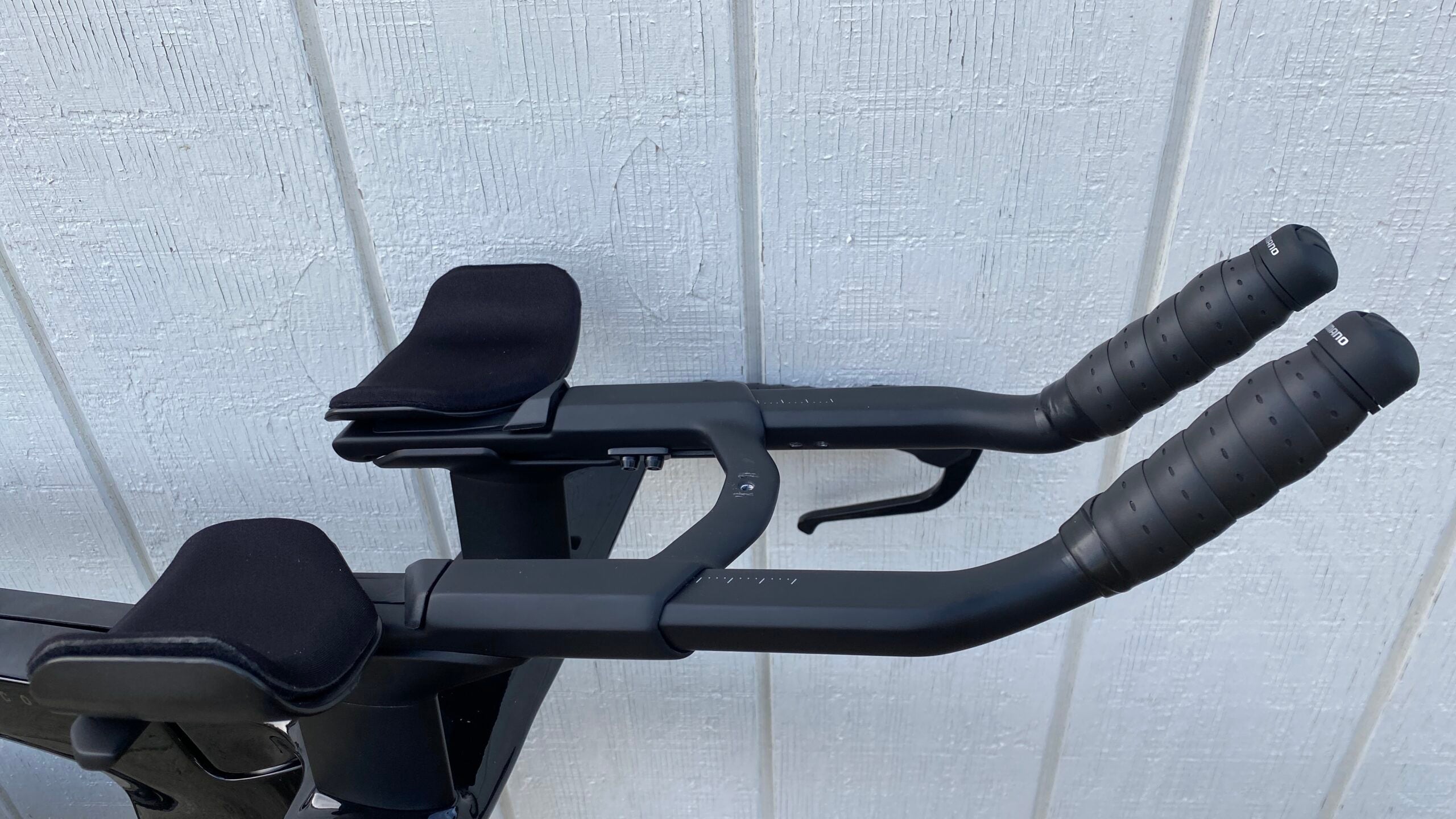
But the most interesting things we found while riding the new Speed Concept are slightly more imperceptible and in many ways rarer than things like storage and fit options. Not since Cervelo’s new P5—a bike that many brands flat-out use as a benchmark to compare their latest bikes to—have we had such a snappy, lively, and intuitive-handling bike. We’ll get to the vibration damping on this bike below, but the Speed Concept has a high level of road feel, accelerates quickly when standing or powering over rollers in the aerobars, and cuts corners very very well. Much like the similarly UCI-legal P5. Because the design is tight and well-thought-out, the Speed Concept feels completely connected to the rider—right out of the box. While it might not hold straight lines like the new V-PR in a screaming downhill aero tuck, it moves aggressively around obstacles and corners without earning the “twitchy” label.
Also much like the P5, the Speed Concept travels very well, as you only need to loosen a few bolts to bring the front end off and pack it up. All compartments and coverings are similarly well-integrated without a bevy of tiny bolts to potentially strip and/or get lost. Here, Trek clearly spent a lot of time in their design iterations to make sure things on the user side were simple, all while giving plenty of features that triathletes expect from a near-$10k bike.
Section dividerTrek Speed Concept Gen 3: The OK
There are a few little nit-picky things on the Speed Concept that you only typically bring up if the rest of the bike is really really good. So we’ll start there. First, the saddle that comes with the SLR 7 version is shockingly hard and shockingly wide. This might work for some triathletes, but others will likely need an immediate swap.
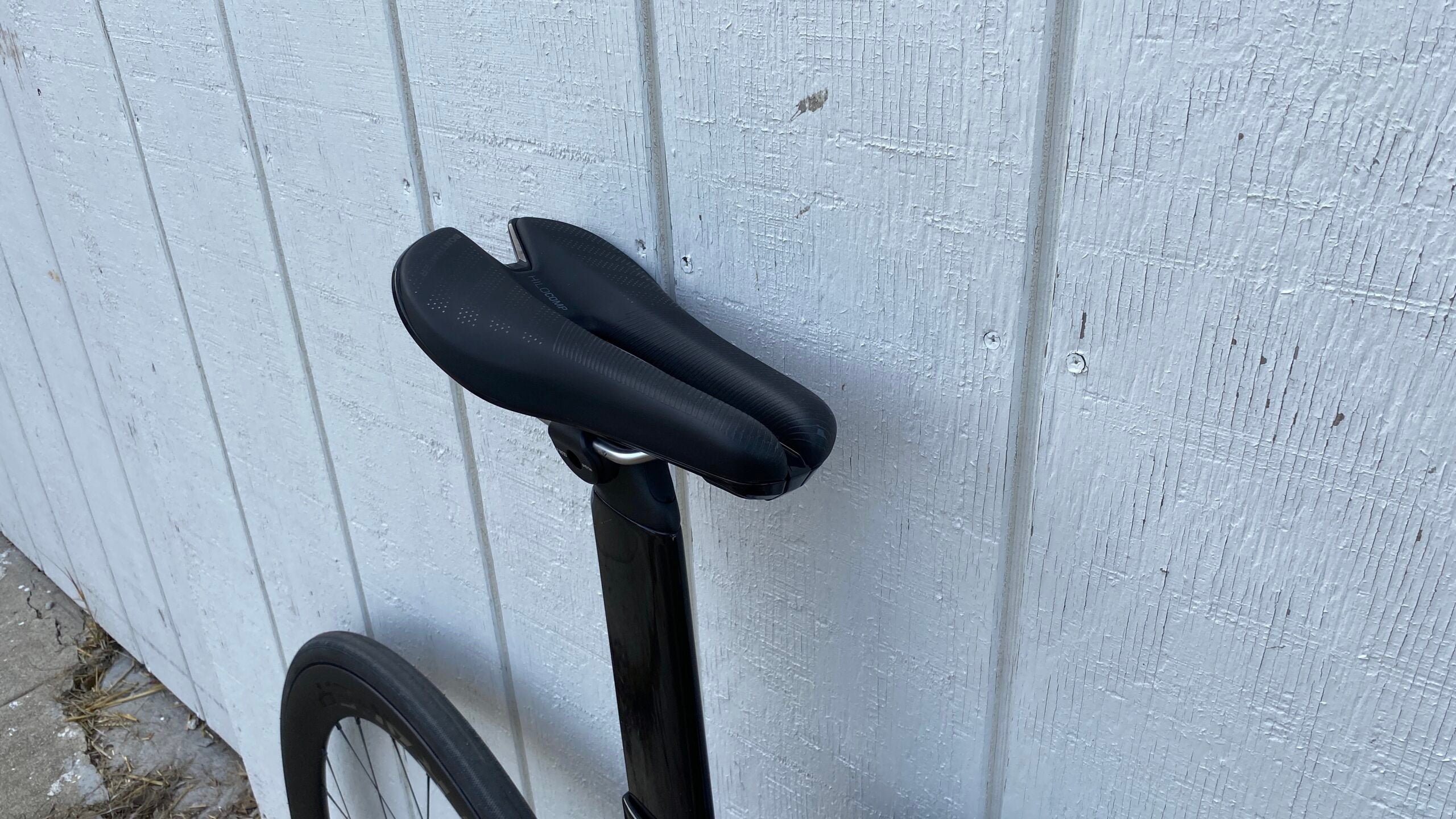
Next, while there is a lot of fit flexibility in the four sizes that Trek offers, the seat angle can’t get as steep as some triathletes might want (if so, look to Canyon or Quintana Roo to get really steep). Also, like many (but not all) integrated front ends that are super cool, you can’t change out the aerobar extensions for a different style without changing the whole bar system—the Speed Concept’s unusual (but easily adjustable) aerobar shape ensures this. Finally, in the nit-picky section, we were surprised that Trek sold this with midrange 51mm carbon wheels on the front and rear. I would hope to either knock $1K off the price and go with basic trainers or add a few bucks and give this rig a proper deep rear/mid-depth front.
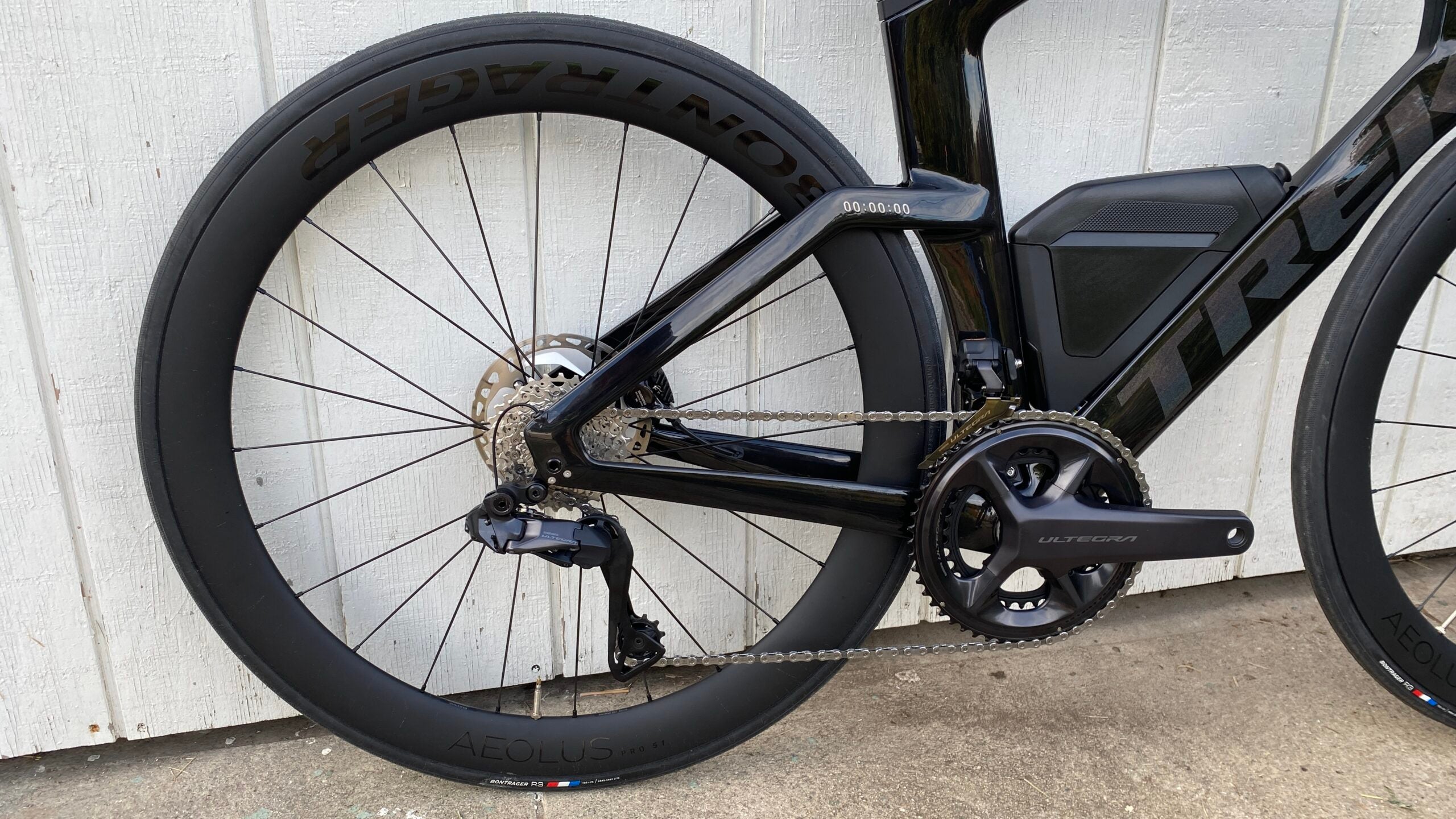
The last thing we were surprised by was how not-smooth the ride was over low- and mid-frequency road vibrations. Given that Trek probably put a lot of time and effort into their IsoSpeed system—which worked like a charm over high-frequency road chatter—the ride was much rougher than I would have thought. That’s not to say the new Speed Concept is a rough-riding bike in the grand scheme of things, but there are at least three other new bikes off the top of my head with a smoother ride at this price range and no suspension system. Of course none of those bikes have the handling and acceleration of the Speed Concept either—so there’s a give and take, of course.
Section dividerTrek Speed Concept Gen 3: Conclusions
I wasn’t sure what to expect when I first got on top of this new Speed Concept. I had always liked the old version in the way that it was predictable but unremarkable. It wasn’t a bike that would get you excited to go out and ride, but it also did it’s job just fine. The third generation of this bike seems to have gotten the “excitement” variable right. This is a fun bike. Sure it’s not as tri-specific as some of the other brands we’ve mentioned here—ones with in-frame hydration and all sorts of other non-UCI-legal goodies—but there’s something to be said for a simple, no-frills design with key features that works very very well.
I think this is (finally) a very big upgrade to the Speed Concept line that might serve as a marker to other brands for a new benchmark. For years, I’ve even used the P5 as something to measure other tri bikes against—particularly when it comes to weight, handling, and acceleration (because of course I don’t have a wind tunnel). This could replace that. I like how easy it is to work on this bike, travel with it, and adjust it. I like the way this bike feels when I ride it, and I know everything on it will stay on it and stay quiet as I add more miles onto its odometer. Not every bike at this price can say that, and with the latest version of the Speed Concept, Trek has made some big, necessary, and exciting improvements that’ll stick for years and years, until the next update.
